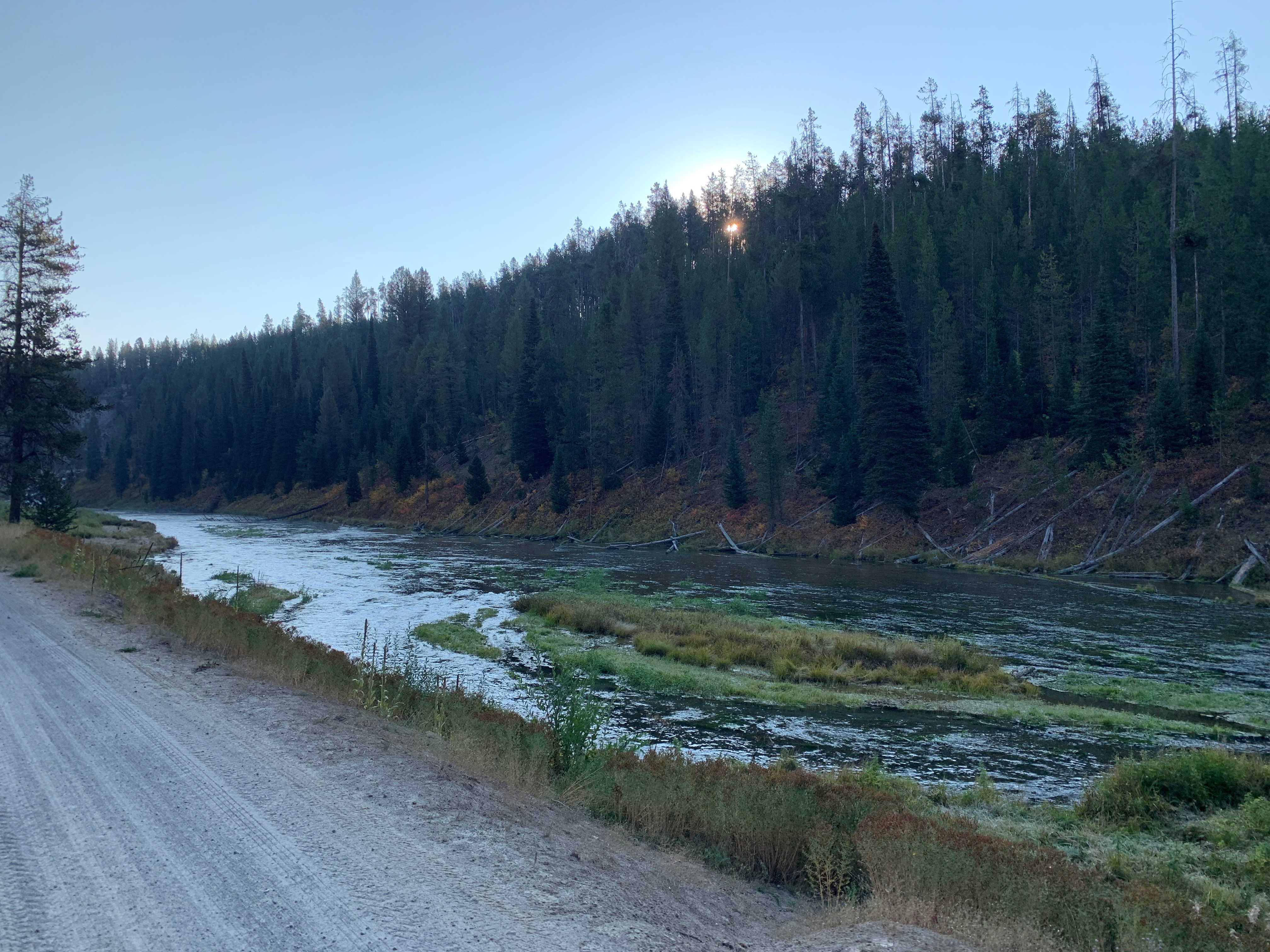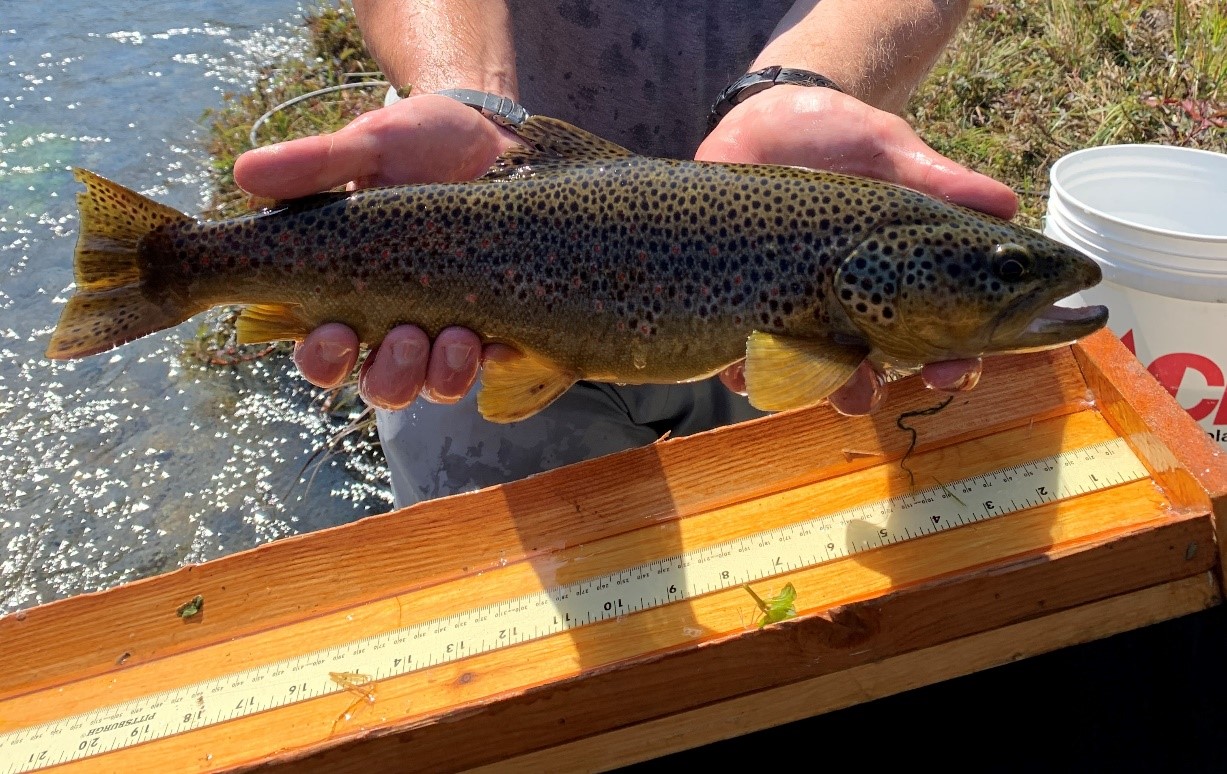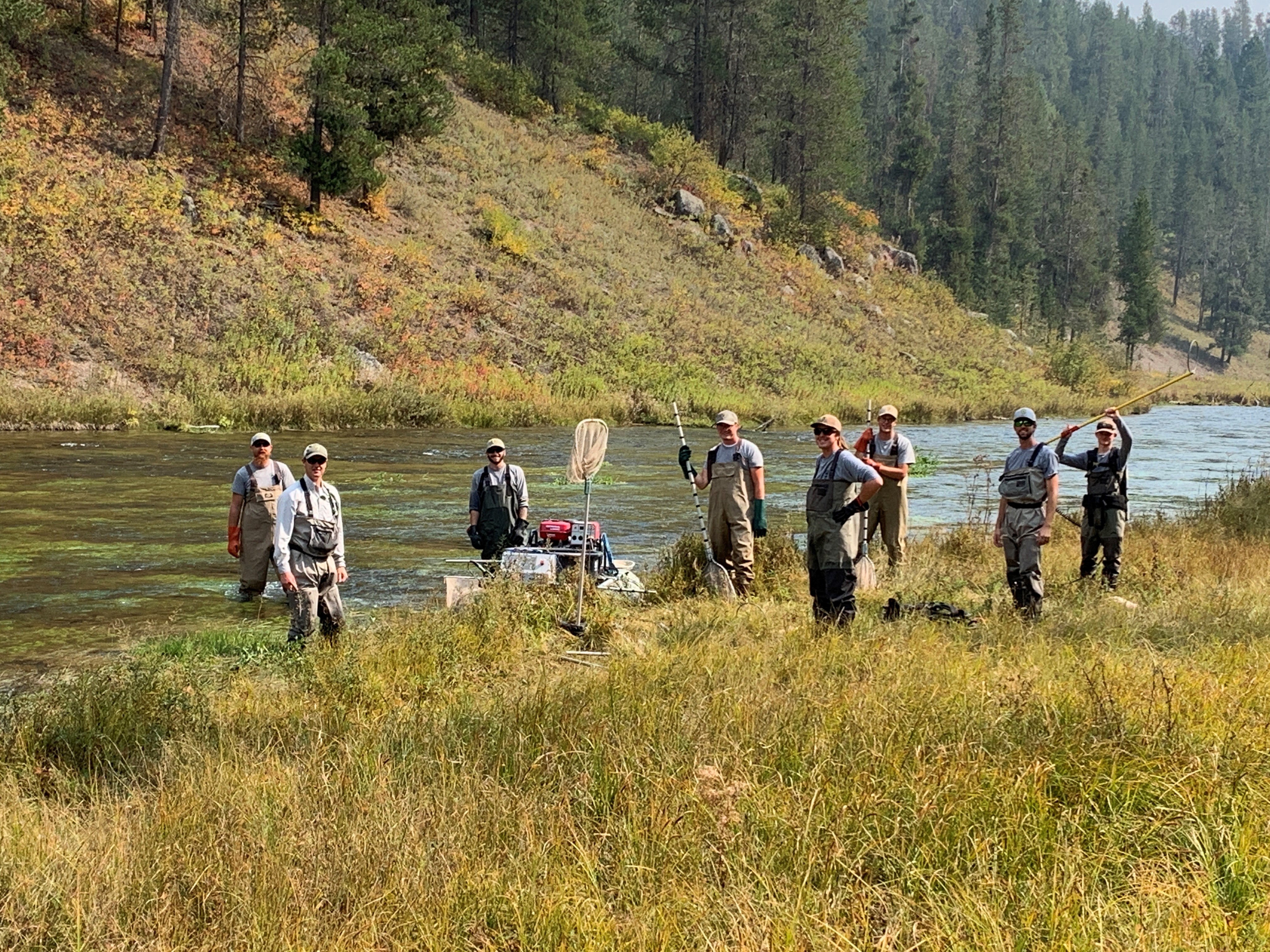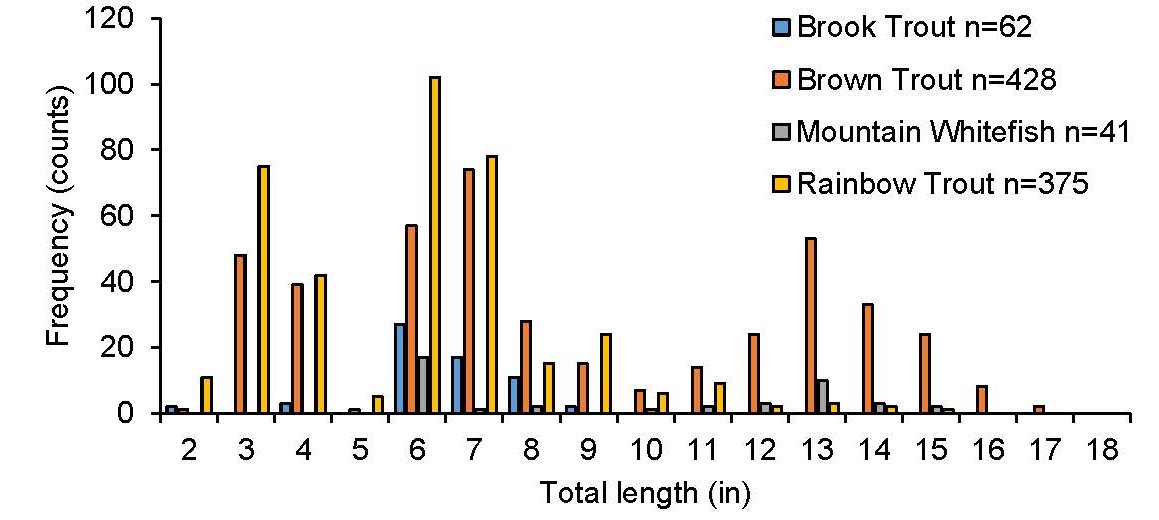
In early September, fisheries biologists conducted their first population survey in the Warm River, a tributary of the Henrys Fork Snake River. This abundance estimate is a new survey in which biologists have never sampled before.
Warm River is approximately 36.5 miles long from its headwaters in the Island Park Caldera to its confluence with the Henrys Fork. At roughly 10 miles upstream from the confluence, Warm Springs contributes 200 cfs of water to the main stem of Warm River and this is where it really begins to be characterized as a spring creek with aquatic vegetation and ultra-clear water.
Due to the accessibility of clean water, a Fish and Game fish hatchery operated from the 1930s to 1950s near the Warm Springs origin. Catchable-sized Rainbow Trout have been stocked annually near the Warm River Campground just upstream of the confluence with the Henrys Fork since the 1960s, but Brown and Rainbow Trout fingerlings were also stocked in the river several times from the 1960s to 1980s. Despite these stockings, the trout population in Warm River is primarily wild fish with both migratory and resident life histories present.

The survey reach began about one mile downstream of the spring’s origin. Due to the wide and shallow nature of this section of the river and the lack of road access to much of the river, staff used a towed barge electrofishing setup and two backpack electrofishers to sample the fish population.

Biologists sampled over 1,500 fish representing multiple fish species including Brown, Brook, and Rainbow trout, Mountain Whitefish, and nongame species Paiute and Mottled sculpin. They conducted a mark/recapture population estimate on game species. In a mark/recapture estimate, fish were sampled and those six inches or longer were marked on day one, then after resting the water for one week we conducted the recapture run.
While measuring fish captured in the recapture run, biologists looked for the mark from the previous week and calculated our abundance estimate based off of the number of fish that were marked on day one, the number of fish in total that were sampled in the recapture run, and the number of marked fish that were recaptured.
Using this analysis technique, we estimated 1,182 trout per mile. Using the same analysis broken down by species, biologists estimated 772 Brown Trout, 753 Rainbow Trout, and 55 Mountain Whitefish per mile, respectively.
They did not recapture enough Brook Trout to estimate their abundance by species. Biologists sampled 620 fish that were greater than six inches long and 927 fish that were less than six inches long. The high abundance of fish less than six inches suggests that the Warm River has very important natal rearing habitat for young fish, and there is likely a contribution to the population from migratory fish that move upstream from the Henrys Fork.

Brown Trout comprised the highest frequency of larger trout that were sampled in the reach and the average total length of Brown Trout was nine inches. There was a high abundance of juvenile Rainbow Trout sampled and the average total length of Rainbow Trout was just over six inches, while Brook Trout average length was seven inches.
Warm River offers great opportunities for anglers to catch multiple trout species in one waterbody. Multiple hatches of insects occurred during the survey, which can provide some great dry fly fishing for fly anglers. Because there are only a few places where anglers can drive to the river there is plenty of water for folks that want to fish off the beaten path, but be sure to carry bear spray and be aware that this is grizzly country.

